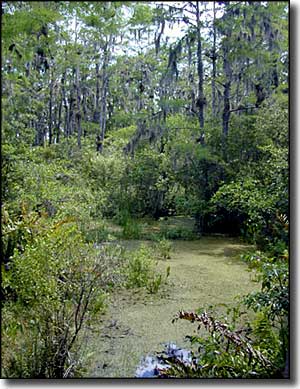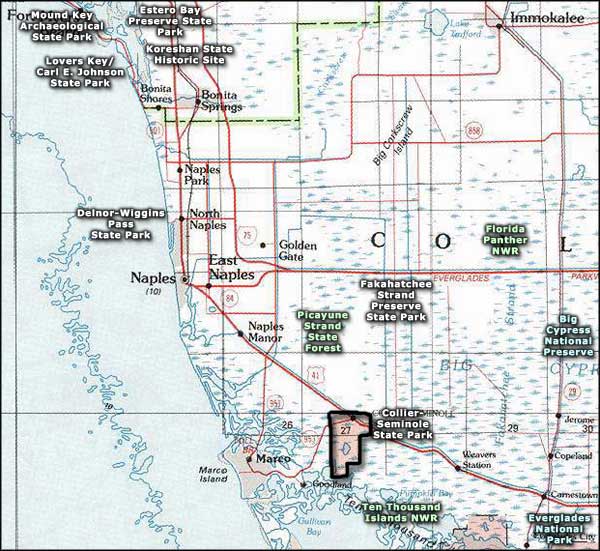Picayune Strand State Forest

Picayune Strand State Forest is a 78,615-acre property in southwest Florida between Interstate 75 and US Highway 41. Most of the area saw all its cypress logged off during the 1940's and 1950's. Then a major developer bought more than 57,000 acres here to build what would have been the largest subdivision in the United States. It was essentially a "selling swampland in Florida" scam and the developer finally went bankrupt. That property now makes up the South Golden Gate Estates tract, the largest parcel of Picayune Strand State Forest. The other major parcel is known as the Belle Meade Tract and it sits to the west of South Golden Gate Estates. Picayune State Forest abuts Fakahatchee Strand Preserve State Park to the east.
The State of Florida began the process of buying out all the 17,000 existing landowners of South Golden Gate Estates in 1985. In 1998, the federal government threw $25 million into the pot to assist the state in completing this huge buyout. Land acquisition was finished in 2006 and the work of repairing the ecological and hydrological damage to the area has begun. The final objective is to restore the natural sheet flow of freshwater necessary to preserve the ecologically sensitive Ten Thousand Islands National Wildlife Refuge and the adjacent Rookery Bay Estuarine Research Reserve. That work includes the removal of 227 miles of roads and the blocking of 45 miles of canals constructed by that developer more than forty years ago.
Picayune Strand State Forest is one of the centerpieces of the Big Cypress Basin ecosystem. For a good part of the year, large sections of the forest are under water. The forest is mostly a mix of wet prairie, cypress strands and pine flatwoods with subtropical hardwood hammocks in the few uplands area. The northern part of the Belle Meade Tract is covered with second-growth slash pine, sprinkled with a few remnant trees more than 100 years old.
For the public, the Belle Meade Tract offers a 22-mile equestrian trail with ten paddocks, non-potable water and an equestrian camping facility at about the halfway point on the trail. Owners must have results of a current negative Coggins test on their person before unloading their horses on the property. Riders under the age of 16 must always wear a helmet when mounted on a horse on state property.
The cypress loggers left many trees that were considered too small to be removed back in the 1940's and 1950's. The Sabal Palm Trail gives hikers an opportunity to visit with some of those trees, some of them more than 100 years old now, on two short loops: 1.3 miles and 1.9 miles. The Sabal Palm Trail is jointly owned with Collier County.
Bird watchers might see red-cockaded woodpeckers, hairy woodpeckers and wood storks on the property, in addition to the thousands of migratory wading birds and waterfowl who come and go with the seasons. You might also come across bald eagle, Florida black bear, swallow-tailed kites and Big Cypress fox squirrel. Florida panthers do live in the area but your chances of seeing one are slim.
The South Golden Gate Estates tract is being worked over by construction equipment as the government pursues the work necessary to accomplish the goals of the Comprehensive Everglades Restoration Project. Sections of the property are closed to public access while the construction work is in progress.
Essentially all of Picayune State Forest is managed cooperatively with the Florida Fish & Wildlife Conservation Commission and the South Florida Water Management District as the Picayune Strand Wildlife Management Area. The map below shows the designated hunting areas.

